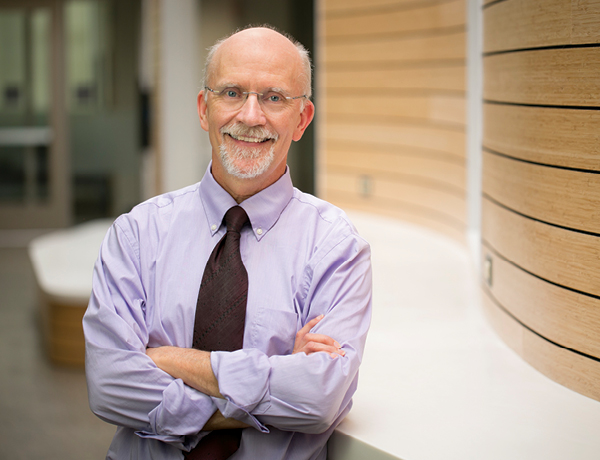
Active learning A paradigm shift requires shifting priorities
Roles reversed in 2018 when five clinical faculty at the Betty Irene Moore School of Nursing at UC Davis swapped their educator hat for that of a student. As fellows in an innovative active-learning fellowship, they broke out of their comfort zones to learn new and innovative ways to teach.
“Often faculty don’t see learning opportunities as a priority. They focus their energy on their students,” says Elizabeth Rice, associate dean for student and faculty success. “We hoped to demonstrate that learning new educational ways of teaching is as critical as updating themselves on the latest clinical advancements.”
But this shift isn’t just in faculty priorities. It is a paradigm shift in traditional education.
“Students need … participation in tasks that are at the edge of [their] basic knowledge of a topic. Lecturing has a valuable role to play: It can inspire students, create connections and provide perspective,” explains Robert Talbert, a mathematics professor at Grand Valley State University. “But it cannot do the heavy lifting of learning. In the end, only students can do this.”
So, faculty must become learners in the new active-learning methods before they can effectively teach them.
“To do this kind of education demands resources that in the past were considered ‘nice to have,’ rather than critical for success,” says Andrew Corbett, the school’s instructional innovation specialist. “This is not about tinkering around the edges. We are changing how we think about education and how we leverage technology to support the shift.”
Corbett says educators must play to the long game. While students may resist the active learning style in the beginning, they will reap the benefits of increased critical thinking skills later in their careers. Research underway by the National Council of the State Boards of Nursing will determine whether clinical judgment and decision-making in practice can be reliably assessed through the use of innovative item types. The Next Generation NCLEX Project will shape future changes on the national exam.
“Before students sharpen their clinical judgment and develop this critical skill, faculty must be supported in transitioning to this new model of education,” Rice adds.
In Faculty Development and Student Learning: Assessing the Connections, researchers conclude “faculty development has measurable impacts on teaching.” In addition, “faculty with a strong sense of self-efficacy who perceive little risk in trying out new teaching styles are more likely to make changes.”
Research shows faculty support translates to student success. “We want creative faculty to lead the way and educate these thoughtful future clinicians to improve our health care system and the care of patients,” Rice says.

